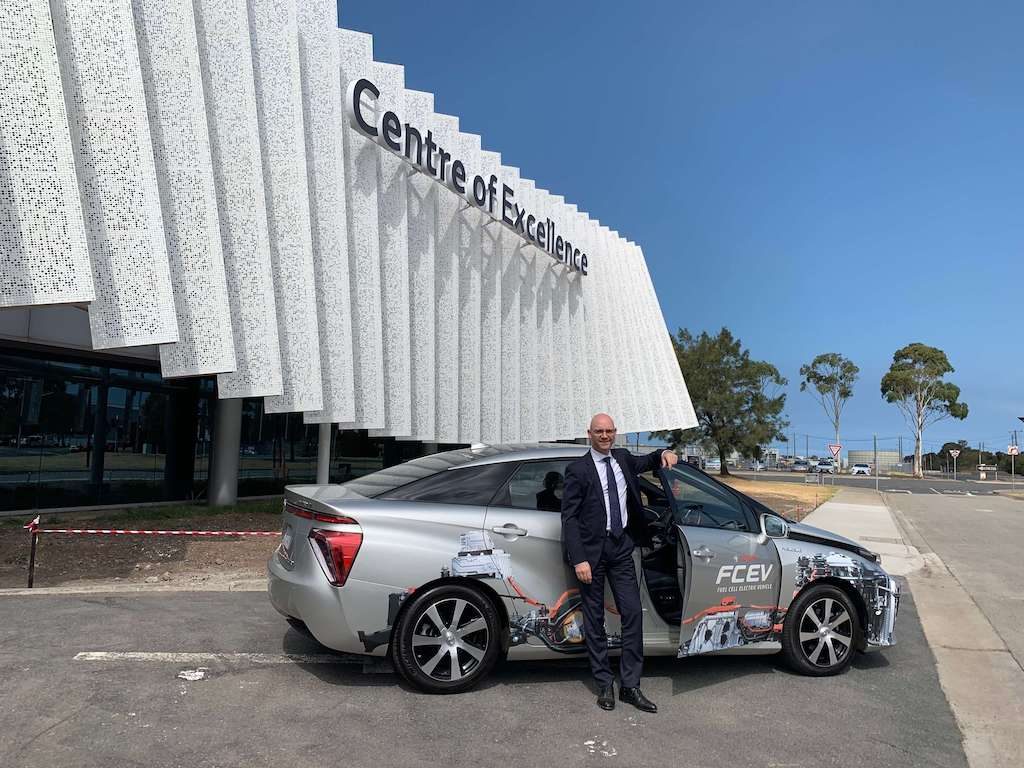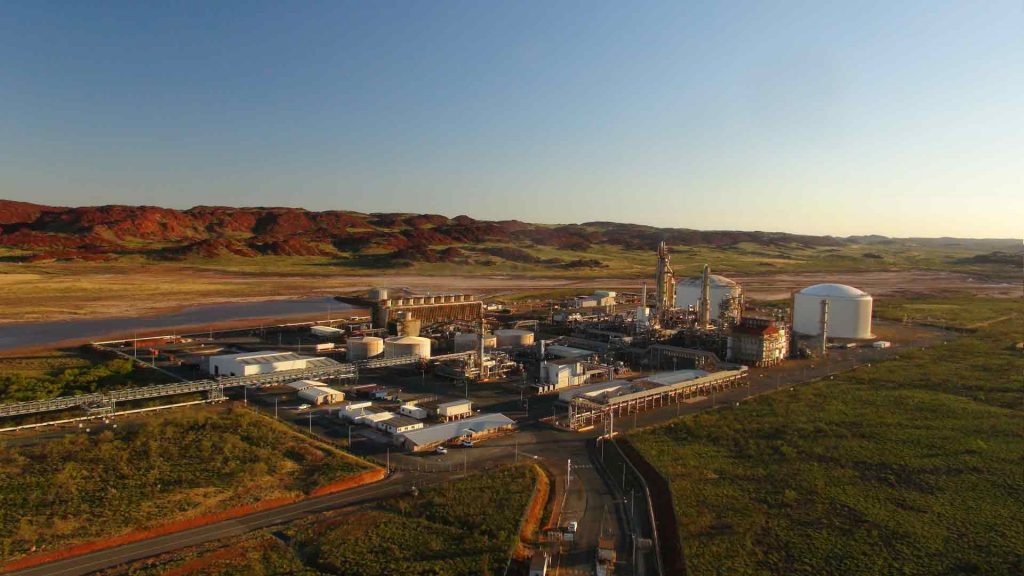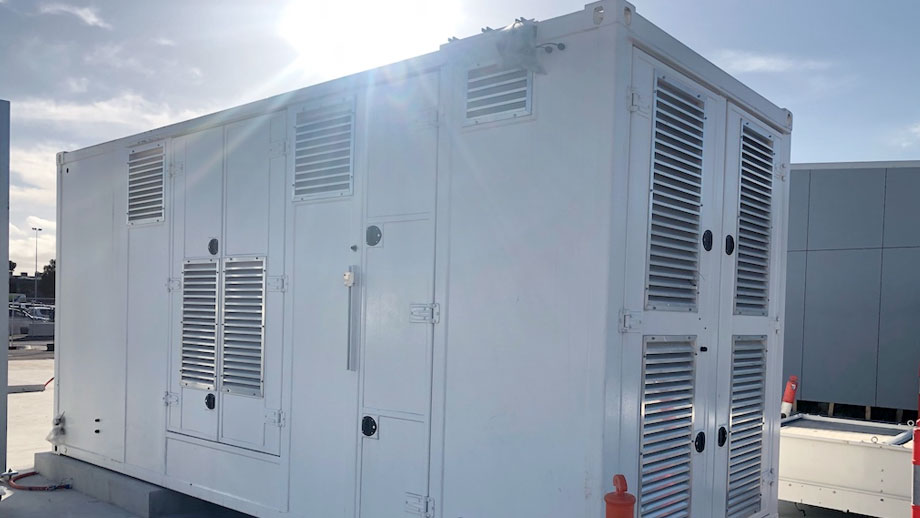Australia’s pathway to $2 per kg hydrogen
Prosperity, emissions reductions and opportunities for Australia to lead on a global stage — all underpinned by the most common element in the universe.

ARENA CEO Darren Miller provided a vision for a hydrogen powered future at the Clean Energy Council’s All Energy Conference, but also a reality check on the amount of work ahead to get there.
Flagging that a lot has changed in the hydrogen space since he spoke at All Energy just one year ago, Mr Miller began with an update on ARENA’s hydrogen projects and set out some pathways about what needs to happen for renewable hydrogen to become commercially viable.
He explained how hydrogen is linked to each of ARENA’s investment priorities, with efforts to drive down the cost of hydrogen produced by renewables-powered electrolysers also having flow-on benefits to other parts of the energy transition.
He also broke down the costs of producing hydrogen by electrolysis today, and where the savings will need to be made in order to achieve an ambitious goal set by the Australian Government.
“It [hydrogen] both requires low cost variable renewable energy input, and can support an electricity system with higher shares of renewable energy through demand response, flexible operation of electrolysers, even the ability to store hydrogen and turn it back into electricity as a way to balance the system.
“There’s a clear integration between the electricity system and the hydrogen technology system. On the other side, industry will be a key user of hydrogen,” he said.
Stepping stones
So far, ARENA has invested $55 million in 28 hydrogen projects, from early stage research and development to early stage trials and deployments. This represents a new direction for the agency, moving on from a past focus on large-scale generation technologies which are becoming commercially viable.

“As things mature, as things become commercial, ARENA will continue to focus on that earlier stage, higher risk, not yet proven technology,” he told the online attendees.
Bringing down the cost of hydrogen electrolysers is a high priority, with seven projects shortlisted to submit full applications to a $70 million funding round, with funding to be announced in early 2021.
He said the value of this work has been reflected in the Australian Government recently committing $1.62 billion to continue ARENA’s work over the next 12 years and announcing expanded responsibilities.
Much of the presentation focused on a stretch goal of producing hydrogen by electrolysis for $2 per kilogram, announced by Minister for Energy and Emissions Angus Taylor in the recently released Low Emissions Technology Statement.
Mr Miller said the target would provide broader benefits, as achieving the ambitious benchmark will demand vast amounts of low cost energy and enable a suite of other technologies, including low emissions steel, low emissions ammonia, hydrogen enabled appliances, electricity storage, as well as demand response and other grid supports.
“Hydrogen sits centrally in the energy transition, and it’s really important that we recognise its potential and scale and grow its potential together.”
Acknowledging that hydrogen has been identified as a possible future export opportunity – including in ARENA investment priorities – he said that won’t be possible if we can’t get the cost low enough and solve transport and storage challenges.
“To have a prosperous Australia recognised as a global low emissions technology leader, I think that’s a fantastic ambition. It both talks to an emissions reduction objective, it also talks to a growth and leadership objective in terms of the global stage.
“I think we need to recognise that Australia can play a key role in emissions reduction and growth of renewable energy globally.” he said.
Setting benchmarks
Stressing that now the Australian Government has set a stretch goal of ‘H2 under $2’, Mr Miller said it is important to have a common understanding of what that means and the challenges in meeting that target.
“At $2 per kilogram, clean hydrogen or renewable hydrogen will be cost competitive against fossil hydrogen.”

With the majority of today’s hydrogen production from steam methane reforming without carbon capture and storage, he said “we’ve seen figures of $1.50 at the very low end, but probably more in the range of $2 to $3 Australian for fossil based hydrogen today.”
To compare apples with apples, he said the cost of hydrogen is measured as it exits the electrolyser “at the farm gate”. This obviously does not take into account storage or transportation, but allows a direct comparison with other methods of production.
This can be thought of as the levelised cost of hydrogen production, factoring in capital and operational expenses, production efficiencies and financing costs.
Where are we now?
Including typical capital investments needed to prepare sites to prepare hydrogen by electrolysis, today’s renewable hydrogen can be produced for between $6 and $9 per kilogram.
To achieve the $2 per kilogram target, Mr Miller forecasts that electrolyser costs will need to fall from between $2 and $3 million per megawatt to $500,000 per megawatt and the cost of electricity from solar and wind will need to nearly halve from today’s levels.
He identified small gains in operational costs and electrolyser efficiency, saying “these are pretty important things but they are not nearly as important as getting the costs out on the electrolyser and balance of plant, and getting the costs out on solar and wind input energy.
“That’s the main game to get H2 under $2.”
What provides the cheapest electricity?
To find the most cost effective way to access electricity, he described three different models to power a 10 MW electrolyser – directly from an 16 MW solar farm, directly from a 16 MW wind farm, and through a combination of 8 MW of solar and 8 MW of wind. The mixture of off-grid solar and wind was found to be best, balancing the generation across the day to provide the most cost effective way to produce hydrogen.
The fourth scenario using grid electricity was considered, but could not provide a realistic pathway to achieve the $2 per kg target.
“A feature of the future energy system is going to be abundant low cost solar and wind, but we won’t be able to use all of that at all times… we should accept and embrace that because it gives us the optimum output for the thing we are trying to do.”
Path to commercialisation
Acknowledging that the industry is still in its early stages, Mr Miller said we are yet to scale electrolysers and the renewable energy generation to the rates needed to achieve the low target costs.
Regardless, he is very confident the goal is attainable, with the challenges familiar territory for the energy industry that has a history of scaling technologies to the point they are commercially viable.
“We’ve done that with solar and wind, we are doing it with batteries and I think we will do it with hydrogen,” he said.
LIKE THIS STORY? SIGN UP TO OUR NEWSLETTER

ARENA